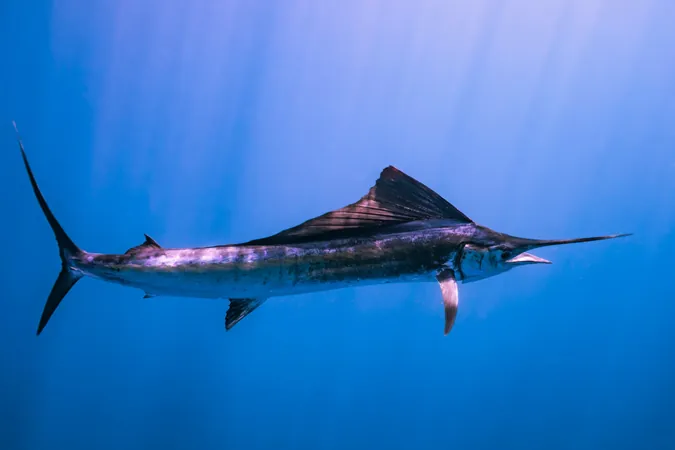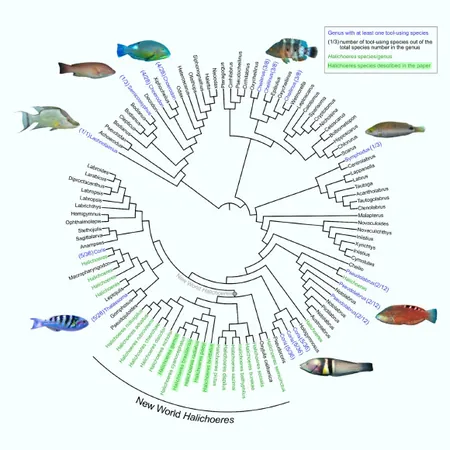
Revealed: Tuna and Swordfish's Long-Distance Dining Habits!
2025-04-01
Author: Siti
How far would you dive for a delicious meal? Oceanographers from MIT have uncovered some fascinating truths about the dining habits of the ocean's top predators: tuna and swordfish! Recent studies show that these magnificent fish are not only skilled swimmers but also long-distance divers, often plunging into the mysterious twilight zone, a cold and dark ocean layer found about half a mile beneath the surface.
This twilight zone, where sunlight barely reaches, has emerged as a significant food hub for three predatory fish species: bigeye tuna, yellowfin tuna, and swordfish. Surprisingly, research published in the ICES Journal of Marine Science reveals that these species obtain between 50% and 60% of their diet from this shadowy realm, challenging previous assumptions about their feeding behaviors.
The findings raise concerns about the implications of increased fishing activity in this layer of the ocean. Ciara Willis, the study's lead author and a postdoctoral researcher at the Woods Hole Oceanographic Institution, warns that heavy fishing in the twilight zone could disrupt the delicate food web and negatively impact tuna and swordfish populations—fish that are already invaluable to fisheries.
What makes the twilight zone so critical? It is a vast and poorly understood region between the sunlit waters and completely dark depths of the ocean, stretching from 200 to 1,000 meters below the surface. Home to a plethora of unique organisms, this area has an estimated biomass of fish nearing an astonishing 10 billion tons, often existing in concentrated layers that attract predators.
Willis aptly describes it as the 'deep ocean buffet,' where many twilight zone creatures, including squid and assorted fish, make nightly migrations to the surface for feeding. These movements are fundamental to the feeding habits of larger predators like bigeye tuna, yellowfin tuna, and swordfish, who are adept at capitalizing on these nightly feeding frenzies.
Interestingly, the researchers collaborated with commercial fishermen to study samples of these predators. Analyzing tissue for essential amino acids allowed them to determine the fish's dietary sources, revealing distinct carbon isotopic signatures that indicate whether they primarily fed in shallow or deep waters.
The results showed a significant reliance on the twilight zone across all three species, particularly in bigeye tuna, which had the most consistent dietary patterns. The potential risks of industrial-scale fishing in this little-explored zone are alarming, as they could affect tuna's availability in our oceans and ultimately the fisheries that target them.
With a growing interest in commercially exploiting the twilight zone for fishmeal and oil, experts like Willis emphasize the need for caution. "If nearly half of the tuna's diet depends on the twilight zone, any disruption to this environment could have far-reaching consequences," she warned. As researchers continue exploring this enigmatic ocean layer, the balance of our marine ecosystems hangs precariously in the balance.







 Brasil (PT)
Brasil (PT)
 Canada (EN)
Canada (EN)
 Chile (ES)
Chile (ES)
 Česko (CS)
Česko (CS)
 대한민국 (KO)
대한민국 (KO)
 España (ES)
España (ES)
 France (FR)
France (FR)
 Hong Kong (EN)
Hong Kong (EN)
 Italia (IT)
Italia (IT)
 日本 (JA)
日本 (JA)
 Magyarország (HU)
Magyarország (HU)
 Norge (NO)
Norge (NO)
 Polska (PL)
Polska (PL)
 Schweiz (DE)
Schweiz (DE)
 Singapore (EN)
Singapore (EN)
 Sverige (SV)
Sverige (SV)
 Suomi (FI)
Suomi (FI)
 Türkiye (TR)
Türkiye (TR)
 الإمارات العربية المتحدة (AR)
الإمارات العربية المتحدة (AR)